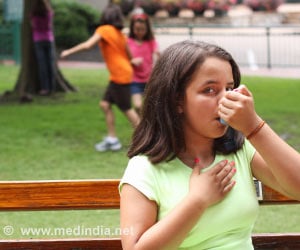Using nanodiamonds with gutta percha in root canal treatment helps prevent bacterial infection and ensures complete recovery.
Highlights
- Nanodiamond-embedded gutta percha protects disinfected root canals from bacterial infection.
- Nanodiamonds are tiny particles made of carbon and are used to deliver drugs and imaging agents.
- Gutta percha is used to block bacteria from infiltrating the tooth but it can break during the procedure.
Nanodiamonds are tiny particles made of carbon and are so small that millions of them could fit on the head of a pin. They resemble soccer balls but have facets like actual diamonds. Those facets enable the nanodiamonds to deliver a wide range of drugs and imaging agents.
Combining nanodiamonds with gutta percha, a material used to fill disinfected root canals, may enhance the gutta percha's protective properties.
"Harnessing the unique properties of nanodiamonds in the clinic may help scientists, doctors and dentists overcome key challenges that confront several areas of health care, including improving lesion healing in oral health," said Dean Ho, professor of oral biology and medicine in the dental school and a co-corresponding author of the study.
Nanodiamonds Prevent Infection after Root Canal
The researchers tested nanodiamond-embedded gutta percha, or NDGP, in three people who were undergoing root canal procedures. Tests of the implanted material confirmed that the NDGP was more resistant to buckling and breaking than conventional gutta percha.
Using NDGP for the procedures did not require changes to any of the standard procedures for root canals, said Dr. Eric Sung, the paper's co-corresponding author and a UCLA professor of clinical dentistry and the United Cerebral Palsy of Los Angeles Professor of Special Patient Care.
Ho, one of the world's leading researchers on the medical use of nanodiamonds, has collaborated with oncologists, cancer biologists, mechanical engineers, materials scientists, chemists and others over the past 10 years to explore how nanodiamonds could be used in oral health, cancer treatment, regenerative medicine and antimicrobial applications, among other areas.
"We believe nanodiamonds could ultimately help us sidestep drug resistance in cancer, improve the efficiency of magnetic resonance imaging and address other clinical challenges," said Ho.
Reference
- Dong-Keun Leea,Theodore Keec, Zhangrui Liang, Desiree Hsioua, Darron Miya, Brian Wua, Eiji Osawa, Edward Kai-Hua Chow, Eric C. Sung, Mo K. Kang and Dean Ho. Clinical validation of a nanodiamond-embedded thermoplastic biomaterial, Proceedings of the National Academy of Sciences (2017), doi: 10.1073/pnas.1711924114.
Source-Medindia











